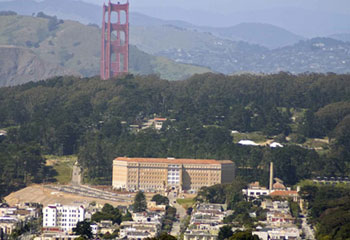A section of San Francisco’s Presidio has received LEED certification for Neighborhood Development (LEED-ND), combining historical preservation with green construction.
This former army base at the base of the Golden Gate Bridge has 433 significant historic buildings and 25-acres of parkland and habitat.
One of the goals of the project is to demonstrate that historic preservation and green construction can go together. "The most ‘green’ building you can have is one that’s already there and has been given another 50 years of life," says Robert Wallace, a historic architect with the Presidio Trust. "There is no fundamental
contradiction between applying a standard like LEED, which was originally intended for new construction, to rehabilitation of historic buildings."
The "greening" is taking place in stages, the first of which is the Public Health Service District, which has 172 housing units, office space and a preschool on 42 acres.
Not all buildings must be certified to achieve LEED for Neighborhood Development. In this case, the three biggest buildings got certified – the largest historic building, Presidio Landmark Apartments – Belles Townhomes (newly constructed, LEED-Platinum) and the historic nurses’ dormitory.
Presidio Landmark Apartments are the centerpiece of the campus. Formerly a hospital, it was empty for a generation and is certified LEED-Gold.

Besides the standard green features, there’s rainwater capture, drought-resistant landscaping, and "dark-friendly" streetlights.
About 2,700 people live in the Presidio, along with some 200 organizations.
In New York, Columbia University’s plan for a new 17-acre campus has received LEED for Neighborhood Development- Platinum.
LEED for Neighborhood Development is the first national benchmark for neighborhood design. The rating system promotes smart location and design of neighborhoods that reduce vehicle miles traveled, and communities where jobs and services are accessible by foot or public transit. It bridges the gap between buildings and how they are connected.

